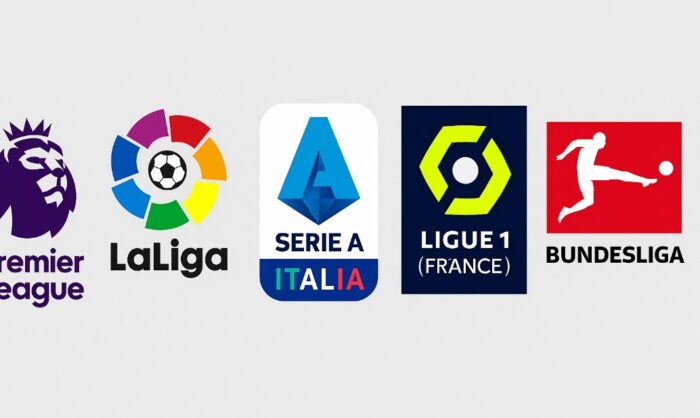If you’re a football fan like me, you’ve probably wondered just how much action the world’s top players see over the course of a season. The players in Europe’s top five leagues—Premier League, La Liga, Bundesliga, Serie A, and Ligue 1—are some of the most talented and hard-working athletes on the planet. But between domestic leagues, cup competitions, European tournaments, and international fixtures, their schedules can look like a marathon.
In this article, let’s break down how many games top league players typically play in a full season, how that compares across leagues, and what impacts these numbers. Whether you’re following your favorite player’s fitness, keeping an eye on team rotations, or even sizing up potential wagers in competitions like the FIFA Club World Cup, understanding these stats can give you a deeper appreciation for the grind these athletes endure.
Key Takeaways
- Top 5 league players typically play 50-65 matches in a full season when accounting for all competitions.
- English, Spanish, and Italian league players have 38 league games; German and French leagues usually have 34.
- Domestic cups, European competitions, and international fixtures significantly boost the match count.
- Clubs going deep in every tournament and participating in events like the FIFA Club World Cup further add to player workload.
- Player fatigue, form, and squad rotation are key elements that shape the season’s outcome.
The Core League Fixture Count

Let’s start with the base: league matches. Each of the top five European leagues has a set number of matches players can take part in, assuming they’re fit and selected for every game.
- Premier League (England) – 38 matches
- La Liga (Spain) – 38 matches
- Serie A (Italy) – 38 matches
- Ligue 1 (France) – 34 or 38 matches (historically 20 teams; format changes have been discussed)
- Bundesliga (Germany) – 34 matches
So right out of the gate, players in England, Spain, and Italy could feature in 38 domestic league games, while those in Germany and France (at least traditionally) max out at 34 league appearances.
Domestic Cups and Additional Tournaments
Now, the league is just one piece of the puzzle. Players in top clubs are typically involved in domestic cups, and if their side goes deep, that can add a significant number of games.
- FA Cup / Copa del Rey / DFB-Pokal / Coppa Italia / Coupe de France – Up to 6-8 matches
- League Cups (where applicable) – For example, the EFL Cup in England can add another 4-6 matches
Depending on how far a club progresses, a player might easily log 10-14 domestic cup games per season in addition to their league duties.
European Competitions and Global Fixtures

If the club is in the UEFA Champions League, Europa League, or Europa Conference League, this adds another chunk of fixtures. A team that reaches the final of the Champions League can play:
- 6 group games
- 4 knockout rounds (2 legs each)
- 1 final
That’s 13 additional games. Combine this with domestic fixtures, and you can see how elite players push past 50 appearances even before counting international duties.
And here’s where it gets interesting for fans of global football: if a club qualifies for tournaments like the FIFA Club World Cup, players can tack on more matches at the international club level. This is where many sports enthusiasts, myself included, start to analyze opportunities in the FIFA Club World Cup betting markets, since these competitions introduce unique matchups and unpredictable outcomes. Tracking player fatigue and match frequency can give valuable insights into form and performance.
International Duties: The Final Piece of the Puzzle
Top players often represent their national teams, adding to their yearly game tally:
- Qualifiers and friendlies – Can easily add 8-12 matches
- Tournaments (World Cup, Euros, Copa America) – Every two to four years, players may feature in another 5-7 games
So, when international duties are in full swing, a top-tier footballer could approach or even surpass 65 games in a season.
Table: Games Per Competition Type (Max Possible)
| Competition | Number of Games |
| Domestic league | 34-38 |
| Domestic cups | 10-14 |
| European competitions | Up to 13 |
| FIFA Club World Cup | 2-3 |
| International matches | 8-12 |
👉 Season total for top players: Often in the range of 50-65 games (or more).
Variations by Player Role and Club Status
Not every player racks up the same number of games. Here are some key factors:
- Starters vs. rotation players: Regular starters at big clubs are more likely to feature in all competitions.
- Injuries: Even a small injury spell can reduce a player’s season count significantly.
- Club success: Clubs that go deep in every competition contribute to players having packed calendars.
- Manager rotation policy: Some managers (e.g., Pep Guardiola) are known for heavy squad rotation to manage workload.
From a fan’s perspective, it’s fascinating (and sometimes worrying!) to see how managers juggle this—especially when critical fixtures stack up in spring.
Why the Schedule Demands Matter
When you follow these numbers closely, you start to see how grueling a full season is. Imagine running at top speed, taking hits, and being expected to perform at elite levels up to 65 times a year—plus training and travel!
This has several impacts:
- Fatigue and injuries: Heavy workloads increase risk, which is why squad depth is so critical.
- Performance consistency: Some players thrive on constant action, while others may show signs of burnout.
- Betting considerations: In competitions like the FIFA Club World Cup, knowing which teams have players approaching exhaustion levels can be a factor in predicting outcomes.
How Does the Top 5 Compare to Other Leagues?

Compared to, say, MLS or South American leagues, European top-tier players often face a heavier load, especially when involved in multiple tournaments. While MLS players typically see 30-40 matches, European stars can easily eclipse that, particularly when their club is successful across competitions.
The Fan’s View: Respect for the Grind
As someone who follows the game closely, I can’t help but respect the dedication and resilience of these athletes. Watching a player give their all, week after week, in different competitions around the world is part of what makes football so exciting. It’s no wonder we see stars resting during minor fixtures or managers carefully managing minutes—it’s all about keeping them fresh for the biggest moments.
So next time you see a player substituted early or rested for a cup game, remember: it’s a long season, and they’ve probably already got 50+ games under their belt!

